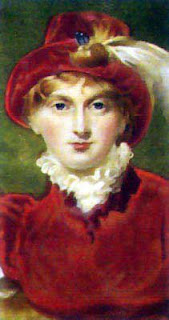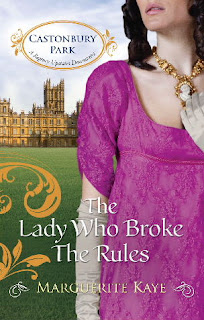Diamonds Are Forever
Outrageous Confessions of Lady Deborah, my latest release, is what I would call a Regency with a definite twist. My heroine writes hugely popular erotic novels for a living. I know, I know but I had the idea for this book long before THAT book went viral. Elliot, my hero, is a soldier turned housebreaker. They meet when Elliot falls off a drainpipe while making his escape after robbing a country house, and lands on Deborah who is wandering the grounds in the middle of the night. If you want to know why she is doing this I’m afraid you’ll have to read the book. Anyway, the loot that Elliot has snaffled is a blue diamond, rectangular in shape and strangely faceted, at about one hundred carats, half the size of the original from which it was cut. Elliot’s ill-gotten booty is in fact part of the stolen French crown jewels.
Louis XIV acquired the French Blue stone in 1678. He had the diamond cut and set in gold, and wore it around his neck. The next Louis had the diamond reset again and turned it into the Order of the Golden Fleece, which the next Louis, the unfortunate XVI wore only occasionally. In 1792, while Louis and Marie-Antoinette were awaiting their fate, the French crown jewels were stolen. Most of the pieces were recovered, but the French Blue disappeared without trace.
I first read about this diamond when I was researching for my last book, Rake with a Frozen Heart. I abandoned the overly-complex crime caper which was originally at the centre of that story, but I filed away my research. Then Elliot, my housebreaker hero, popped into my mind, and I remembered the French Blue story. Waste not, want not, as my gran was fond of saying (usually when trying to make me clear my plate!).
According to legend, the French Blue turned up in England in the early part of the Nineteenth century. Some say it was cut into two before it left France, some that it was never stolen but appropriated by the revolutionary Danton, who used it to bribe the Duke of Brunswick, and that it was he who had it cut.
Caroline, Brunswick’s daughter, was the despised wife of the Prince Regent. So appalled was Prinny by her lack of personal hygiene that he managed to force himself to do his marital duty just the once.
The prince was not generous to poor Caroline, who was forced to sell many of her jewels in order to support herself, and it has been argued that the French Blue was one of them. In 1812, there is evidence that a jeweller called Daniel Eliason owned a diamond which resembled the French Blue. Did he buy it from Caroline, or from one of the original thieves? Strangely enough, there is evidence that Caroline’s husband, the Prince Regent, also had a diamond very similar to the French Blue. Was this the other half or the original? What we do know is that diamond disappeared when the prince, by this time King George IV, died.
Outrageous Confessions of Lady Deborah is set in 1817. I have chosen to believe that the original French Blue diamond was cut in half by the French thieves, and that Deborah’s relative from whom Elliot steals it, acquired it by nefarious means from them. The ‘real’ French Blue, which is known as the Hope Diamond, has had a chequered path through history, with a reputation for bringing death or tragedy to its wearer. Tavernier, who sold it to Louis XIV was reputed to have been torn to pieces by wild dogs. Louis himself died of a festering wound. Louis XVI, as we know, ended up on the guillotine. Various owners have been murdered, died in freak accidents, or committed suicide, though since it was donated to the Smithsonian, where it now resides, the curse has lain dormant. For Elliot, it’s a lucky stone, because it brings him Deborah. The path of true love is by no means straightforward for my hero and heroine, but it’s fun, sexy, and ultimately rewarding journey.
Do you believe in lucky charms? What’s yours? I have a signed copy of Deborah and Elliot’s story to give away. Just leave a comment for a chance to win.
Outrageous Confessions of Lady Deborah is out now in the UK, US and Canada. Here is the blurb:
JUST WHO IS LADY DEBORAH? I am the Dowager Countess of Kinsail, and I have enough secrets to scandalise you for life. I will never reveal the truth of my soul-destroying marriage – some things are too dark to be told. But at least no one can guess that I, a famously icy-hearted widow, am also the authoress of the shamelessly voluptuous romances currently shocking the ton…! Only now I have a new secret identity, one that I will risk my life to keep – accomplice to Elliot Marchmont, gentleman, ex-solider and notorious London thief. This adventurer’s expert touch ignites in me a passion so intoxicating that surviving our blistering affair unscathed will be near impossible…
And here’s what the Romantic Timessaid about it when they gave it four stars:
Daring. Dangerous. Delightful. Kaye’s new Regency romance is a riveting and thrilling adventure between a writer and a thief, both bent on revenge, and neither expecting to find love at last. Kaye has another winner on her hands, with an original plot, lots of sizzling passion and enough nail-biting action to satisfy every fan.
There’s excerpts, background and more about my books on www.margueritekaye.com.







